Seven Questions Over Breakfast with Claudio Muñoz
 May 1st, 2012 by jules
May 1st, 2012 by jules
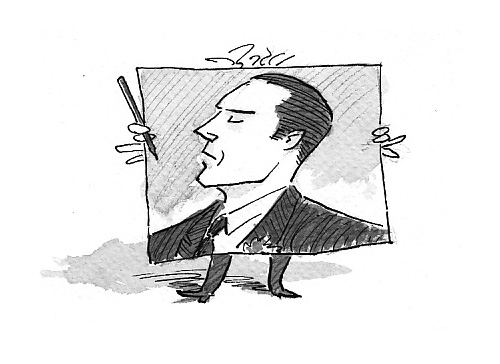
I’m afraid that, if I try to count the number of picture book creators who have visited this site in the past six years, I’ll be here all day. I’ve done quite a few Q&As, to say the least. But today is a “first” for 7-Imp. Unless you count the photographs Chris Raschka used to answer some of his questions or Deborah Freedman’s illustrated responses to the Pivot Questionnaire (hi, chicken), this is the first time an interviewee has sent illustrated responses to his answers. Well, most of them. “Although some of them are in written form,” Chilean-born illustrator Claudio Muñoz told me, “I have given most of my answers the way I communicate best — that is, with my drawings.”
And that makes this illustration junkie very happy. In fact, here’s what happened when I asked if he could tell me what he likes to have for breakfast daily:
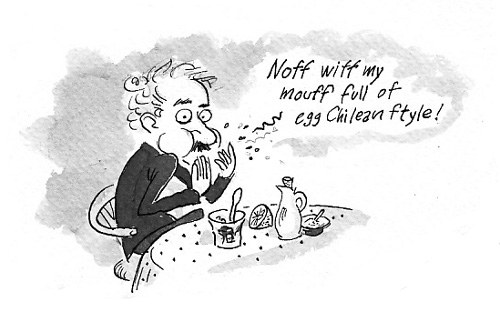
Muñoz—pictured at the very top of the post is his self-portrait (which I LOVE)—has had a long and rewarding career in both editorial and children’s book illustration. Most recently, readers saw his shimmering watercolor work in Meg Medina’s Tía Isa Wants a Car (Candlewick, June 2011), pictured below. (It’s been nearly a year now, yet I still can’t get over THE COLORS in this illustration. LOVE LOVE LOVE.)
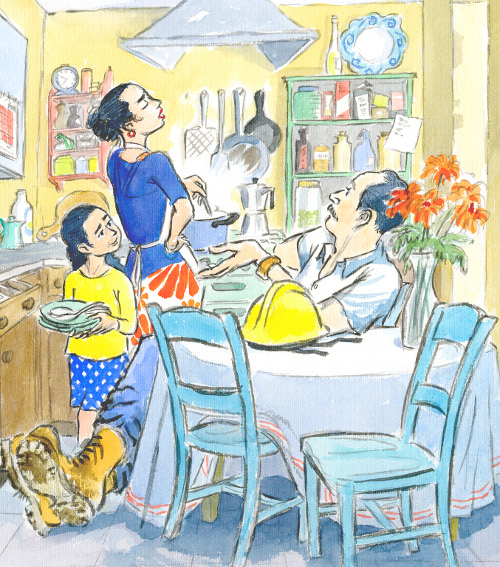
And … some illustrations from many of his previous titles are featured below, too. His work—and many of his illustrated titles were written by his wife, Jill Newsome—has been called “eloquent” and “graceful,” and reviewers have praised his ability to capture the emotional heart of stories. “Munoz demonstrates an almost cinematic ability to advance the story line,” wrote Publishers Weekly about one of his earlier illustrated titles, “and his…protagonists exhibit an Oscar-worthy range of expressions.”
I’m happy he’s visiting for breakfast this morning—I’m up for trying his eggs, Chilean-style—and I thank him for putting so much thought and time into his responses, illustrated or otherwise. I’ll get the basics from him while he and I set the table for seven questions over breakfast. (Well, I’ll set the table. He’s busy drawing.)
Jules: Are you an illustrator or author/illustrator?
Claudio:
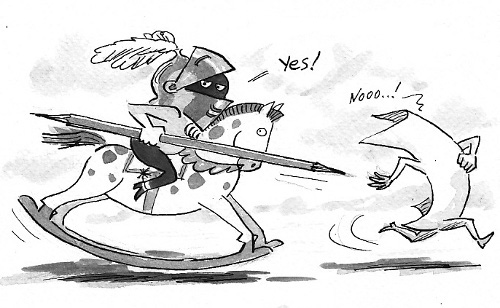
Jules: Can you list your books-to-date?
Claudio:
Jules: What is your usual medium, or––if you use a variety—your preferred one?
Claudio:
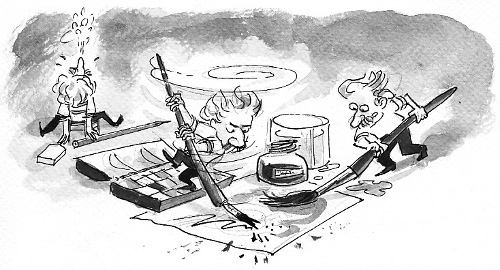
Jules: If you have illustrated for various age ranges (such as, both picture books and early reader books OR, say, picture books and chapter books), can you briefly discuss the differences, if any, in illustrating for one age group to another?
Claudio:

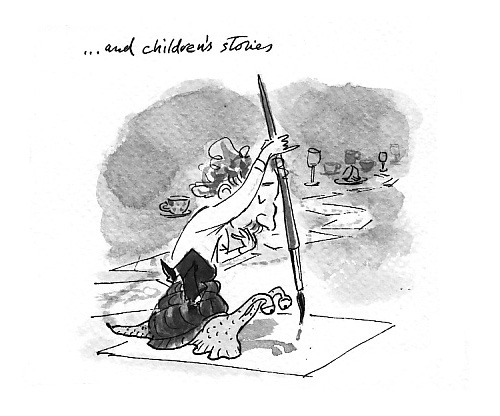
Jules: Where are your stompin’ grounds?
Claudio:
Jules: Can you briefly tell me about your road to publication?
Claudio:
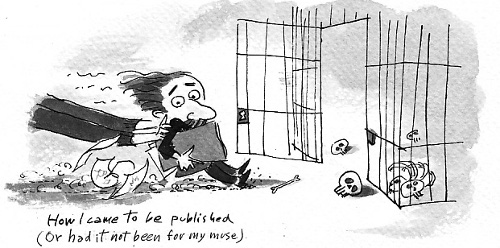
Jules: Can you please point readers to your web site and/or blog?
Claudio:

Jules: If you do school visits, tell me what they’re like.
Claudio:
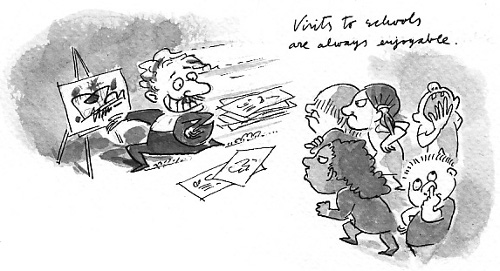
Jules: If you teach illustration, by chance, tell me how that influences your work as an illustrator.
Claudio:
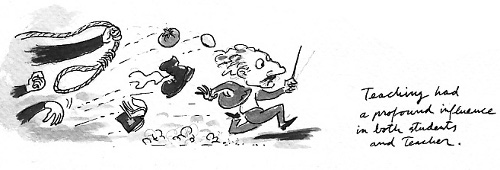
Jules: Any new titles/projects you might be working on now that you can tell me about?
Claudio:
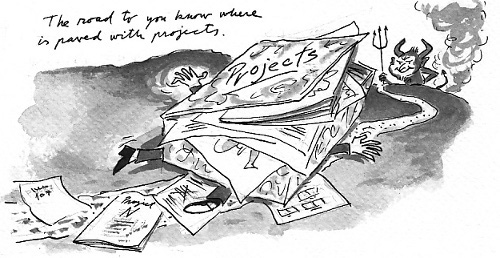
 Okay, the eggs and coffee are on the table, and it’s time to get a bit more detailed with seven questions over breakfast. I thank Claudio again for visiting 7-Imp.
Okay, the eggs and coffee are on the table, and it’s time to get a bit more detailed with seven questions over breakfast. I thank Claudio again for visiting 7-Imp.
1. Jules: What exactly is your process when you are illustrating a book? You can start wherever you’d like when answering: getting initial ideas, starting to illustrate, or even what it’s like under deadline, etc. Do you outline a great deal of the book before you illustrate or just let your muse lead you on and see where you end up?
Claudio: Isn’t Chaos at the base of all creative endeavors? In which case the word “exactly” strikes me as inexact.
With children’s books, I’ve worked mainly inspired by a proposed text, and usually the first ideas begin to form even as we speak over the phone with the editor. Tiny pencil sketches start to grow around the text as the images occur to me. Perhaps one or several of those images reflect turning points of the narrative and jump out as crucial, the guiding ones that perhaps are going to help define the tone of the illustrations and that often change very little during the whole process. By the end of that first reading, I have an approximate idea of how many drawings will be needed and sometimes even of the desirable proportion of the pages. If I manage to reach that point, I know I’m on my way.
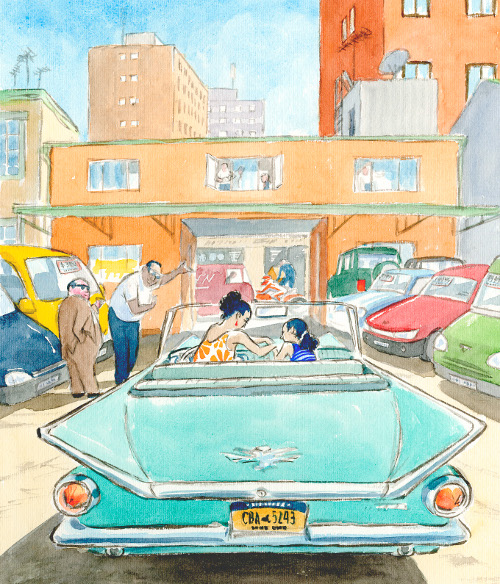
while she tapes down the corners.”
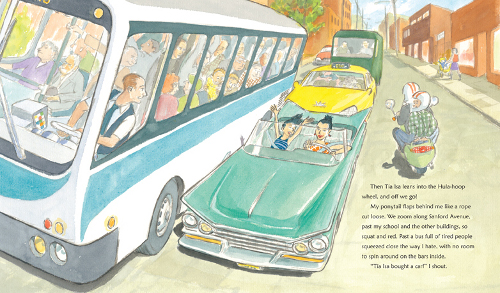
‘Tía Isa bought a car!’ I shout.”
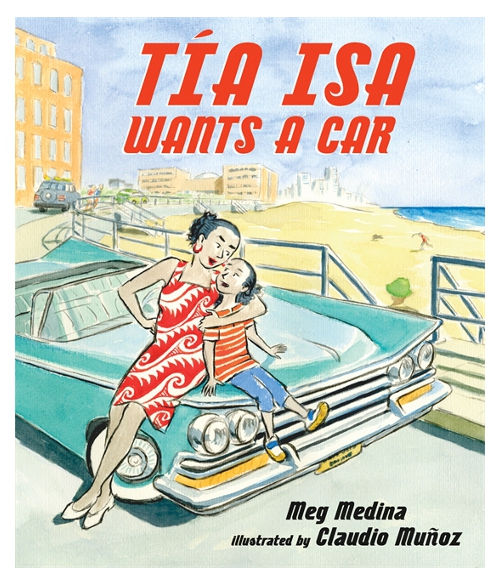
Editorial work couldn’t be more different. The kind of text I’m confronted with here is usually conveying an idea or expanding on events and the people involved. And I have only a few hours to produce a graphic synthesis of this before all goes on show. And in ten days, the magazine or the web page carrying my drawing will be obsolete — one in a bin; the other in electronic limbo.

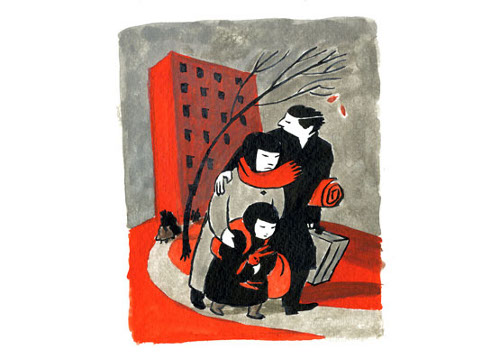
2. Jules: Describe your studio or usual work space.
Claudio: My studio is on the second floor of a barn attached to the South end of a West Dorset long house with big windows to the West. (See below.) I can rest my eyes in the trees and greenery out there, in the fast flow of the clouds and in the vastness of the sky. In the distance to the North, I see the strange man-made shape of one of the many Iron-Age hill forts dotted through the area. Every once in a while, I hear a honking and, rushing to the window, catch the breathtaking sight of a flying flock of swans or Canada geese. At night I hear the tireless waves on the pebble beach: a few minutes to the South is the sea. I often go and face it in awe and with reverence, remembering all shores are its shores.
3. Jules: As a book-lover, it interests me: What books or authors and/or illustrators influenced you as an early reader?
Claudio: The Chilean Mario Silva Ossa (a.k.a. “Coré”), who illustrated the book in which I learned to read and the covers of the children’s magazine El Peneca. Cervantes’ Don Quijote. The fables of Aesop and La Fontaine and their illustrations by Gustave Doré. The comics and animations of Walt Disney. The novels of Jack London, Mark Twain and [Robert] Louis Stevenson.
A bit later another Chilean, René Ríos Boettiger (a.k.a. “Pepo”), who invented and drew the comic strip Condorito. The cartoons and illustrations of yet another Chilean, Renzo Pecchenino (a.k.a. “Lukas”), who loved the port of Valparaíso, as I do.
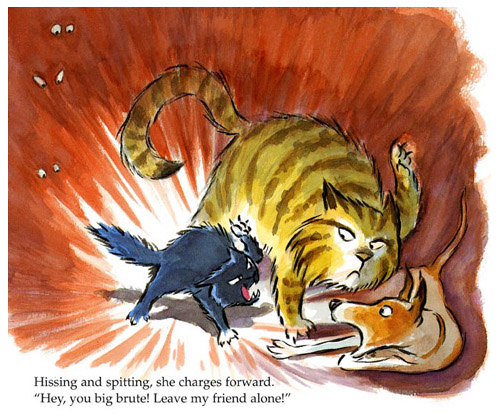
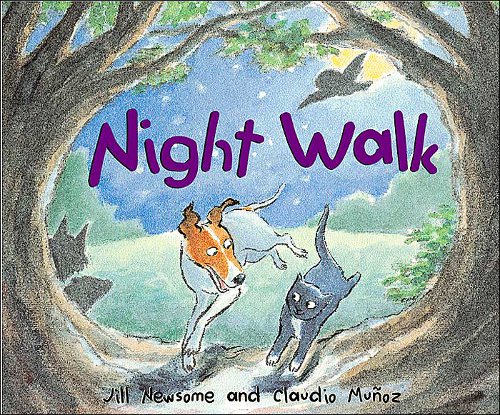

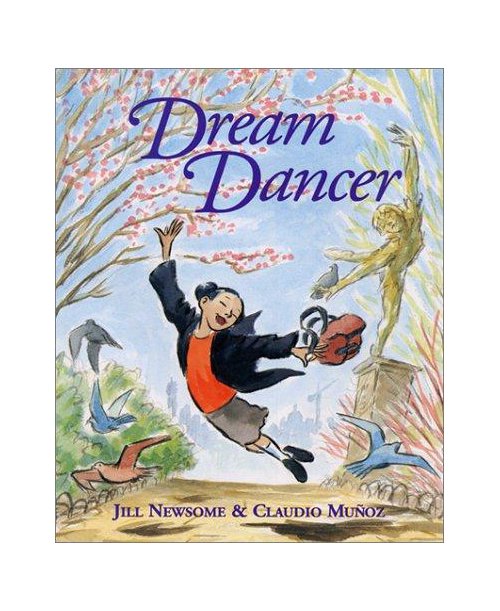
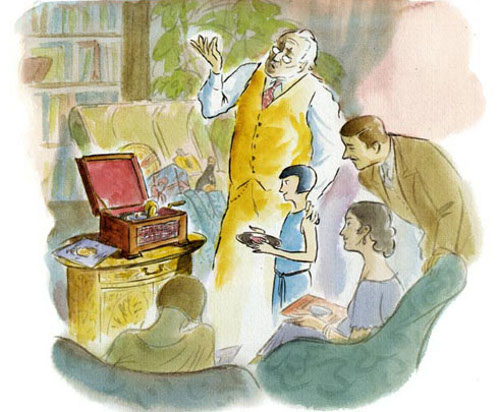
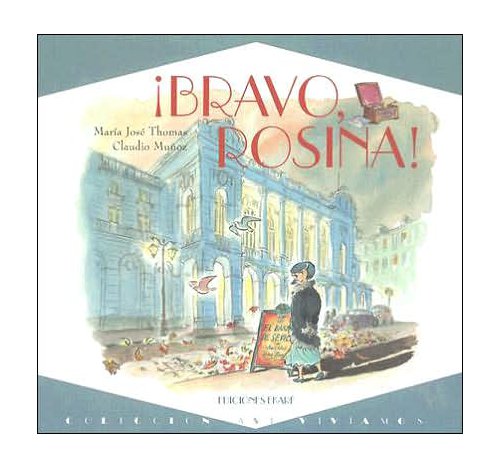
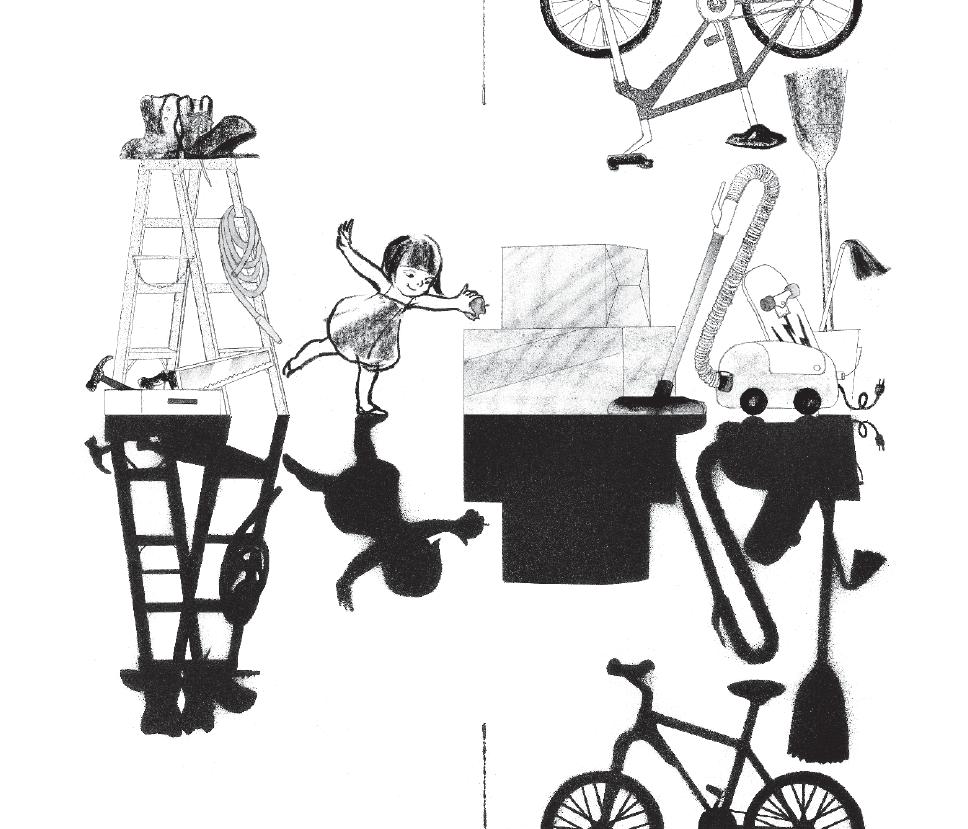
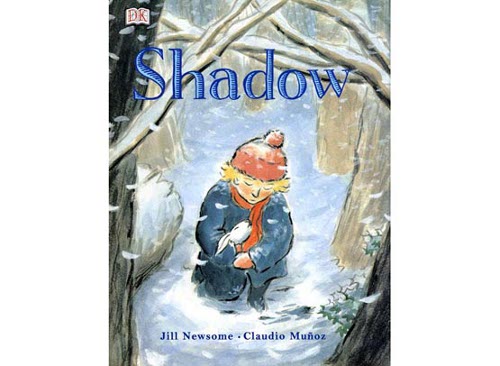

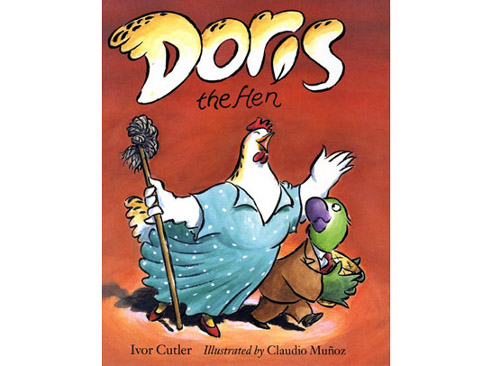
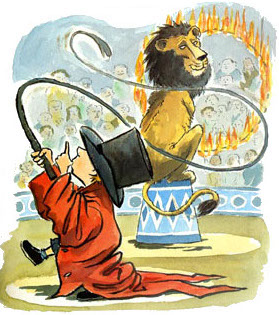 4. Jules: If you could have three authors or illustrators—whom you have not yet met—over for coffee or a glass of rich, red wine, whom would you choose? (If they’re deceased, I won’t tell.)
4. Jules: If you could have three authors or illustrators—whom you have not yet met—over for coffee or a glass of rich, red wine, whom would you choose? (If they’re deceased, I won’t tell.)
Claudio: Unable to say “¡Salud!” to Mario Silva Ossa, I’d clink glasses anytime with Maurice Sendak, Raymond Briggs, or John Burningham.
John and I have met several times but never had the chance to have a proper talk. Yet together we’ve lifted so many glasses that in one occasion we were unceremoniously expelled from the bar of the elegant Plaza Hotel in Bologna for singing too loud. So much for the land of Bel-Canto.
{Pictured above left is an illustration from Ilene Cooper’s Jake’s Best Thumb, published by Dutton Juvenile in 2008.}
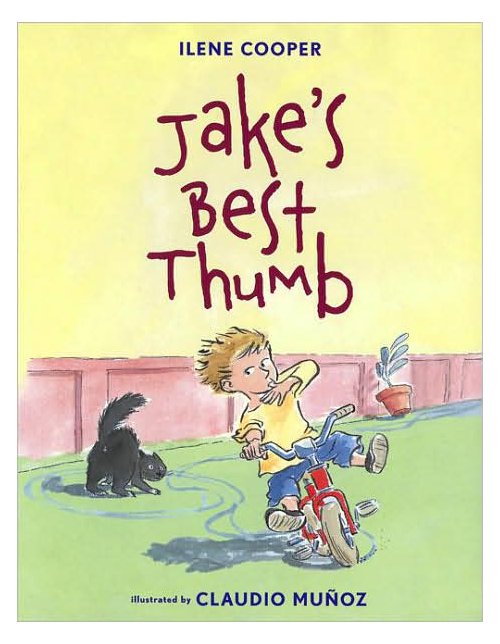
5. Jules: What is currently in rotation on your iPod or loaded in your CD player? Do you listen to music while you create books?
Claudio: I love music with passion. Perhaps it is why I cannot listen to it while concentrating on something else, like at the start of a drawing. Once I’m satisfied that I’ve got it, I can listen to almost anything, except perhaps for Barry Manilow and Philip Glass.

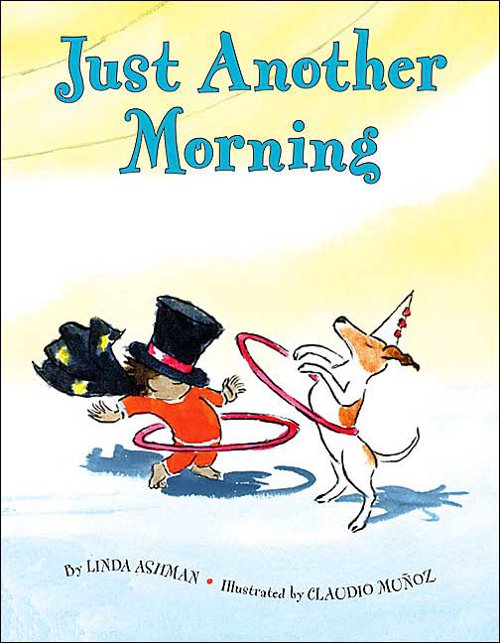
(HarperCollins, 2004)
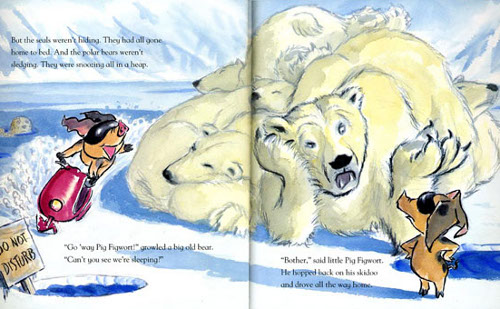
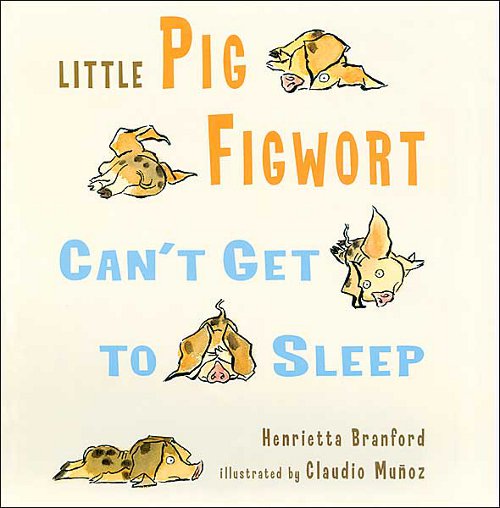
Henrietta Branford’s Little Pig Figwort Can’t Get to Sleep (Clarion, 2002)

6. Jules: What’s one thing that most people don’t know about you?
Claudio: How to spell my surname.
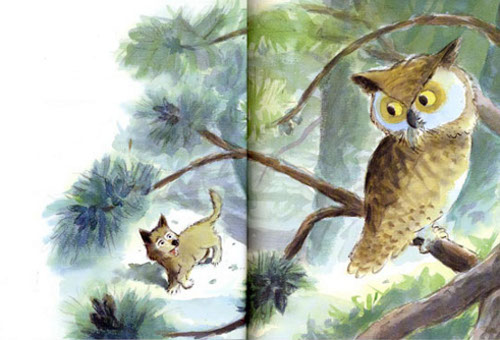
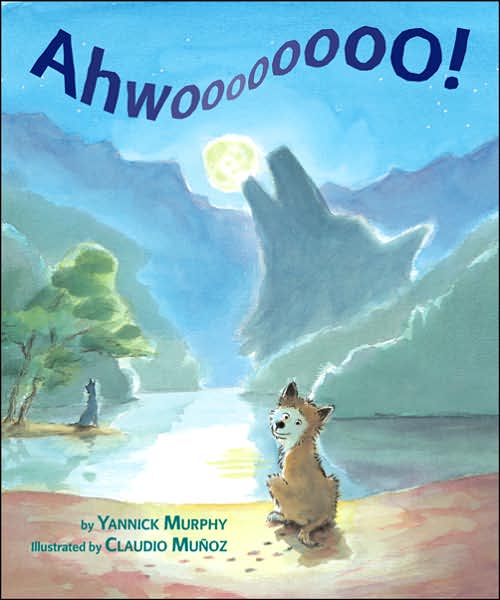
Yannick Murphy’s Ahwoooooooo! (Clarion, 2006)
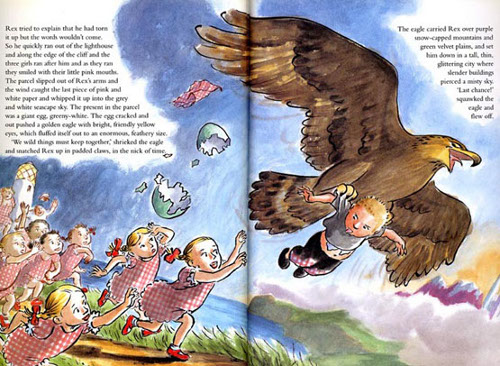

Fay Weldon’s Nobody Likes Me! (Trafalgar Square, 1997)
7. Jules: Is there something you wish interviewers would ask you — but never do? Feel free to ask and respond here.
Claudio: “Would you mind opening this Riesling I inherited from my German granny while I put Der Rosenkavalier on the old turntable?”

I don’t think my answers would be complete without mentioning the encouragement received from my beloved parents and some fondly remembered teachers, most of them now long departed. My work, my life, would not be what they are without their inspiration and that of a host of people. Like, my friend Jack Prince, a wonderful and unbelievably neglected Dutch illustrator; or Michelle Cartlidge, a friend and colleague who, after an early nasty experience, kept insisting I should try her “really nice” publishers, who indeed became my gate into children’s books; or all those brave editors who entrusted articles and stories to my inexperienced quill; or my children and granddaughter who have been inspiring models; or my companion, sometimes co-author and constant muse, my dear Jill.
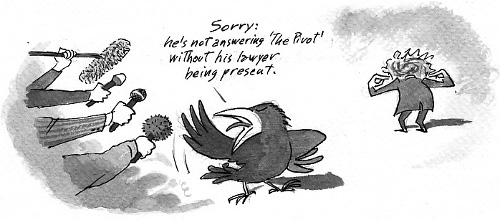
Claudio: I’ll answer just the one …
Jules: If Heaven exists, what would you like to hear God say when you arrive at the Pearly Gates?
Claudio:
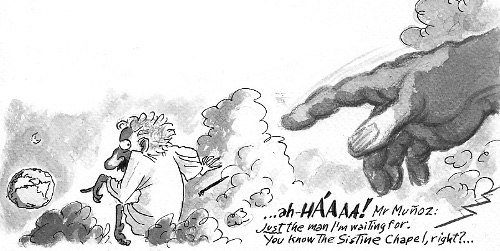
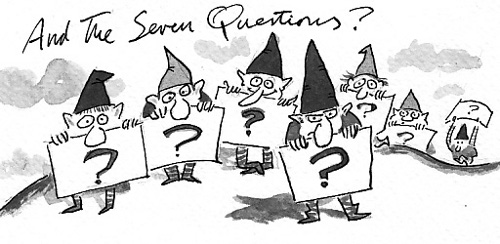
All artwork and images used with permission of Claudio Muñoz.
TIA ISA WANTS A CAR. Text copyright © 2011 by Meg Medina. Illustrations copyright © by Claudio Muñoz. Reproduced by permission of the publisher, Candlewick Press, Somerville, MA. (Those illustrations are re-posted from this earlier 7-Imp post.)


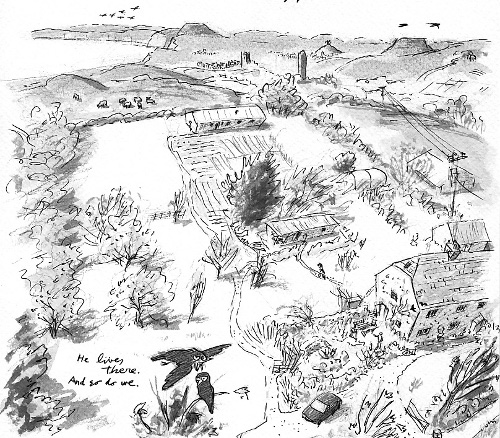
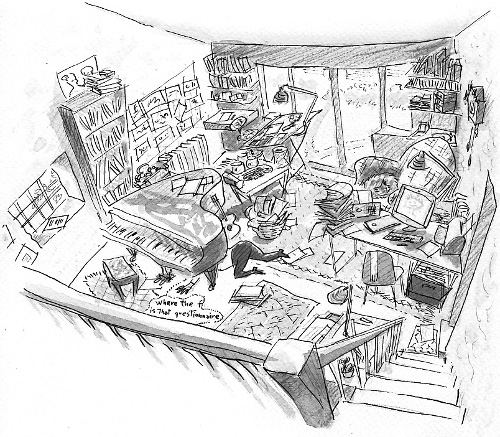

Dear Jules,
Yours is such a lovely idea carried out with much good humour, kindness and generosity.
Thank you so much, it was a huge, unusual pleasure.
Claudio.
OH! A perfect way to start the day. I LOVE that it’s watercolor that’s so rich and deep – it’s amazing. And I REALLY WANT TIA ISA’S CAR. But, I’ll settle for mooning over the drawings some more.
Also, Chilean eggs? I am SO there…
I love all of Claudio’s answers.
Brilliant from top to bottom. Had to laugh at the “Barry Manilow” answer. Have been wanting to see Tia Isa for a long time — heard such great things about it. LOVE the Pivot response!! Claudio is my new hero :). Thanks so much.
I’m a fan of Claudio’s art, and I love his illustrations in response to some of the questions. The school visits and teaching ones, in particular, made me laugh out loud.
Love the publishing skulls.
I can only say that this interview proves that I was a very lucky author to have Claudio’s work in partnership with my story. What a talent! Gracias por todo, Claudio!
I so enjoyed reading this delightful, creative interview. It is a sincere pleasure to make the acquaintance of Claudio Munoz. I really need to see some of these titles “in the flesh”. And I am anxious to add a couple to my personal collection. Thanks to both of you. What a glorious end to the day!
Impossibly luscious colors and dynamic compositions. Many thanks for introducing me to this wonderful illustrator!
This was such an enjoyable interview to experience! Thank you, Jules, and thank you, Claudio Muñoz.
–Farida
[…] It made this illustration junkie very happy when artist Claudio Muñoz illustrated his responses to my breakfast interview this […]
What a wonderful way to respond to the questions! Very cool, Claudio.
Such a refreshing and amusing interview. I too am very humbled to have worked with Claudio – at which point I must apologise for the craziness of editorial work (it is true!) – I wish I worked on children’s stories!! The illustrative answers were hilarious, particularly school visits and the pivot Q&A, it had me laughing out loud. Thanks for sharing!
[…] Claudio Muñoz—in a very fun, mostly-illustrated interview on May 1, 2012—when I asked if he could tell me what he likes to have for breakfast […]